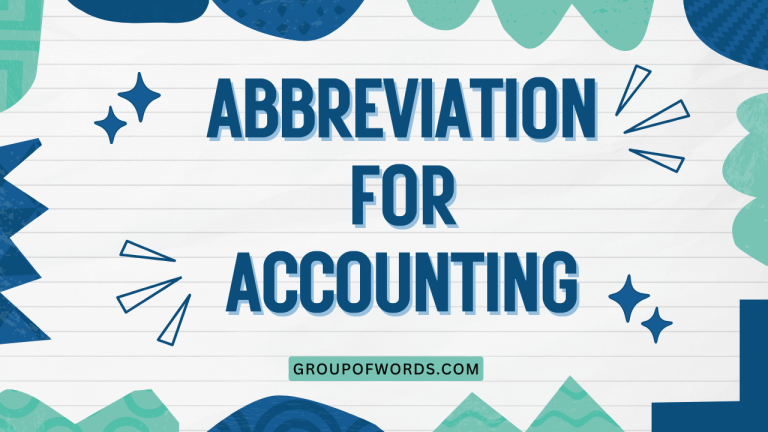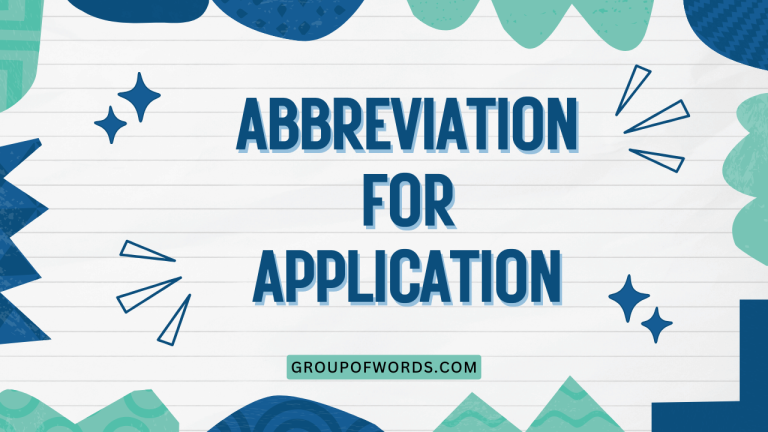Abbreviation for Instructional: A Comprehensive Guide
Understanding abbreviations is a crucial aspect of mastering the English language. Abbreviations are shortened forms of words or phrases, and they are used extensively in various contexts, including instructional materials.
Knowing how to correctly use and interpret abbreviations can significantly improve your comprehension and communication skills. This article provides a comprehensive guide to abbreviations used in instructional settings, covering their definitions, usage rules, common mistakes, and practical exercises.
Whether you are a student, teacher, or language enthusiast, this guide will equip you with the knowledge and skills necessary to confidently navigate the world of instructional abbreviations.
Table of Contents
- Introduction
- Definition of Instructional Abbreviations
- Structural Breakdown of Abbreviations
- Types of Instructional Abbreviations
- Examples of Instructional Abbreviations
- Usage Rules for Instructional Abbreviations
- Common Mistakes with Instructional Abbreviations
- Practice Exercises
- Advanced Topics in Instructional Abbreviations
- Frequently Asked Questions
- Conclusion
Definition of Instructional Abbreviations
An instructional abbreviation is a shortened form of a word or phrase commonly used in educational or training contexts. These abbreviations serve to condense information, save space, and improve readability in instructional materials, academic writing, and administrative documents. They are a form of linguistic shorthand that allows for efficient communication within the educational sphere. Instructional abbreviations can represent academic subjects, degrees, course titles, or general terms related to teaching and learning. Their function is primarily to simplify complex or frequently used terms, making them easier to manage and understand.
Instructional abbreviations can be categorized based on their function and the type of information they represent. For instance, subject abbreviations like “Math” for Mathematics or “Sci” for Science are used to refer to specific academic disciplines.
Degree abbreviations, such as “BA” for Bachelor of Arts or “PhD” for Doctor of Philosophy, denote academic qualifications. Course abbreviations, like “Eng Comp” for English Composition or “Calc I” for Calculus I, identify particular courses of study.
General instructional abbreviations, such as “e.g.” (for example) or “i.e.” (that is), are used to clarify or provide additional information within instructional texts. Understanding these categories helps in correctly interpreting and using instructional abbreviations in various contexts.
Structural Breakdown of Abbreviations
The structure of abbreviations can vary depending on the word or phrase being shortened and the conventions of the field in which they are used. Some common structural elements include:
- Initialisms: Formed from the first letters of a series of words and pronounced letter by letter (e.g., GPA for Grade Point Average).
- Acronyms: Also formed from the first letters of a series of words, but pronounced as a single word (e.g., LASER for Light Amplification by Stimulated Emission of Radiation, although this is more of a general, not instructional, example).
- Contractions: Shortened forms of words where letters are omitted, often indicated by an apostrophe (e.g., can’t for cannot, though this is not typically instructional).
- Clippings: Shortened forms of words where the beginning or end is removed (e.g., exam for examination).
Abbreviations may also include periods to indicate that they are shortened forms (e.g., Mr. for Mister), although the use of periods is becoming less common, especially in initialisms and acronyms. The capitalization of abbreviations can also vary, with some being consistently capitalized (e.g., SAT) and others being lowercase (e.g., etc.). The context in which an abbreviation is used often dictates its capitalization and punctuation.
Types of Instructional Abbreviations
Subject Abbreviations
Subject abbreviations are used to represent academic disciplines or fields of study. These abbreviations are commonly found in course catalogs, academic transcripts, and research papers.
Examples include “Math” for Mathematics, “Hist” for History, and “Chem” for Chemistry. The purpose of using subject abbreviations is to save space and improve readability, especially in documents that frequently refer to specific subjects.
Degree Abbreviations
Degree abbreviations denote academic qualifications awarded by educational institutions. These abbreviations are used to indicate the level and type of degree earned, such as “BA” for Bachelor of Arts, “MSc” for Master of Science, and “PhD” for Doctor of Philosophy.
Degree abbreviations are essential for accurately representing academic credentials in résumés, curriculum vitae, and professional biographies.
Course Abbreviations
Course abbreviations are used to identify specific courses offered by educational institutions. These abbreviations typically combine a subject abbreviation with a course number or title, such as “Eng Comp I” for English Composition I or “Calc II” for Calculus II.
Course abbreviations are used in course schedules, registration forms, and academic transcripts to efficiently represent course information.
General Instructional Abbreviations
General instructional abbreviations are used to represent common terms and phrases related to teaching and learning. These abbreviations include “e.g.” (for example), “i.e.” (that is), “cf.” (compare), and “N.B.” (note well).
General instructional abbreviations are used in textbooks, research papers, and instructional materials to clarify concepts, provide examples, and draw attention to important information.
Examples of Instructional Abbreviations
The following sections provide extensive examples of instructional abbreviations, organized by category. Each table includes a wide range of abbreviations and their corresponding full forms, along with illustrative sentences to demonstrate their usage.
Subject Abbreviations Examples
This table provides a comprehensive list of common subject abbreviations used in academic settings. These abbreviations help condense information and improve readability in course catalogs, transcripts, and other educational documents.
| Abbreviation | Full Form | Example Sentence |
|---|---|---|
| Math | Mathematics | The student excelled in Math and received an A+ in the course. |
| Sci | Science | The Sci department offers a wide range of courses, including Biology, Chemistry, and Physics. |
| Hist | History | She is majoring in Hist and plans to become a history teacher. |
| Eng | English | The Eng department requires all students to take a composition course. |
| Chem | Chemistry | He is conducting research in Chem, focusing on organic compounds. |
| Phys | Physics | The Phys course covers topics such as mechanics, electromagnetism, and thermodynamics. |
| Bio | Biology | She is studying Bio and hopes to become a geneticist. |
| Psych | Psychology | The Psych department offers courses in both clinical and experimental psychology. |
| Soc | Sociology | He is taking a course in Soc to learn about social structures and institutions. |
| Econ | Economics | The Econ department offers courses in microeconomics and macroeconomics. |
| Pol Sci | Political Science | She is majoring in Pol Sci and hopes to work in government. |
| Comp Sci | Computer Science | He is studying Comp Sci and plans to become a software engineer. |
| Art Hist | Art History | She is taking a course in Art Hist to learn about different artistic movements. |
| Mus | Music | The Mus department offers courses in theory, composition, and performance. |
| Phil | Philosophy | He is studying Phil and hopes to become a professor of philosophy. |
| Anthro | Anthropology | She is taking a course in Anthro to learn about human cultures and societies. |
| Ling | Linguistics | He is studying Ling and plans to become a language translator. |
| Stats | Statistics | The Stats course covers topics such as probability, inference, and regression. |
| Geog | Geography | She is studying Geog and hopes to work in urban planning. |
| Journ | Journalism | He is studying Journ and plans to become a reporter. |
| Comm | Communications | She is studying Comm and hopes to get a job in advertising. |
| Bus | Business | He is studying Bus and plans to get his MBA. |
| Acct | Accounting | She is studying Acct and hopes to become a CPA. |
| Mktg | Marketing | He is studying Mktg and plans to get a job as a marketing manager. |
Degree Abbreviations Examples
This table provides a comprehensive list of common degree abbreviations used to denote academic qualifications. These abbreviations are essential for accurately representing academic credentials in résumés, curriculum vitae, and professional biographies.
| Abbreviation | Full Form | Example Sentence |
|---|---|---|
| BA | Bachelor of Arts | She holds a BA in English Literature from Harvard University. |
| BS | Bachelor of Science | He earned a BS in Computer Science from MIT. |
| BSc | Bachelor of Science | She earned a BSc in Biology from Oxford University. |
| MA | Master of Arts | He is pursuing an MA in History at Yale University. |
| MS | Master of Science | She completed an MS in Engineering at Stanford University. |
| MBA | Master of Business Administration | He obtained an MBA from the Wharton School of Business. |
| PhD | Doctor of Philosophy | She has a PhD in Physics from the University of California, Berkeley. |
| EdD | Doctor of Education | He earned an EdD in Educational Leadership from Columbia University. |
| JD | Juris Doctor | She holds a JD from Harvard Law School. |
| MD | Doctor of Medicine | He received his MD from Johns Hopkins University School of Medicine. |
| DDS | Doctor of Dental Surgery | She obtained a DDS from the University of Michigan School of Dentistry. |
| PharmD | Doctor of Pharmacy | He completed a PharmD from the University of Southern California. |
| BSN | Bachelor of Science in Nursing | She earned a BSN from Duke University School of Nursing. |
| MSN | Master of Science in Nursing | She earned a MSN from Yale University School of Nursing. |
| DNP | Doctor of Nursing Practice | He completed a DNP from the University of Washington School of Nursing. |
| MEng | Master of Engineering | She obtained a MEng from Cornell University. |
| LLM | Master of Laws | He holds an LLM from New York University School of Law. |
| MFA | Master of Fine Arts | She earned an MFA from the Rhode Island School of Design. |
| MPA | Master of Public Administration | He completed an MPA from Harvard Kennedy School. |
| MPH | Master of Public Health | She obtained an MPH from Johns Hopkins Bloomberg School of Public Health. |
| DVM | Doctor of Veterinary Medicine | He received his DVM from the University of Pennsylvania School of Veterinary Medicine. |
| PsyD | Doctor of Psychology | She completed a PsyD from Baylor University. |
| ThD | Doctor of Theology | He received his ThD from Harvard Divinity School. |
Course Abbreviations Examples
This table provides a comprehensive list of common course abbreviations used to identify specific courses offered by educational institutions. These abbreviations are used in course schedules, registration forms, and academic transcripts to efficiently represent course information.
| Abbreviation | Full Form | Example Sentence |
|---|---|---|
| Eng Comp I | English Composition I | All freshmen are required to take Eng Comp I. |
| Calc I | Calculus I | He is struggling with Calc I and may need to seek tutoring. |
| Calc II | Calculus II | After completing Calc I, students can enroll in Calc II. |
| Intro Bio | Introduction to Biology | She is taking Intro Bio as a prerequisite for advanced biology courses. |
| Gen Chem | General Chemistry | He is enrolled in Gen Chem to fulfill his science requirement. |
| US Hist I | United States History I | She is studying the colonial period in US Hist I. |
| World Lit | World Literature | He is reading classic novels in World Lit. |
| Microecon | Microeconomics | She is learning about supply and demand in Microecon. |
| Macroecon | Macroeconomics | He is studying inflation and unemployment in Macroecon. |
| Comp Sci I | Computer Science I | She is learning the basics of programming in Comp Sci I. |
| Psych 101 | Introduction to Psychology | He is taking Psych 101 to learn about the principles of human behavior. |
| Soc 101 | Introduction to Sociology | She is enrolled in Soc 101 to understand social structures and institutions. |
| Art Hist Surv | Art History Survey | He is studying different art movements in Art Hist Surv. |
| Mus Theory I | Music Theory I | She is learning about harmony and counterpoint in Mus Theory I. |
| Phil Ethics | Philosophy of Ethics | He is discussing moral principles in Phil Ethics. |
| Anthro Cult | Cultural Anthropology | She is studying different cultures in Anthro Cult. |
| Ling Intro | Introduction to Linguistics | He is learning about language structure in Ling Intro. |
| Stats Basic | Basic Statistics | She is studying probability and inference in Stats Basic. |
| Geog World | World Geography | He is learning about different regions of the world in Geog World. |
| Journ Writing | Journalism Writing | She is practicing news writing in Journ Writing. |
| Comm Public | Public Communication | He is learning about public speaking in Comm Public. |
| Bus Mgt | Business Management | She is studying management principles in Bus Mgt. |
| Acct Fin | Financial Accounting | He is learning about financial statements in Acct Fin. |
| Mktg Princ | Principles of Marketing | She is learning about the 4 P’s in Mktg Princ. |
General Instructional Abbreviations Examples
This table provides a comprehensive list of common general instructional abbreviations used to represent common terms and phrases related to teaching and learning. These abbreviations are used in textbooks, research papers, and instructional materials to clarify concepts, provide examples, and draw attention to important information.
| Abbreviation | Full Form | Example Sentence |
|---|---|---|
| e.g. | for example | Use visual aids, e.g., charts and graphs, to illustrate your points. |
| i.e. | that is | The experiment was conducted in vitro, i.e., in a test tube. |
| cf. | compare | For a different perspective, cf. Smith (2010). |
| N.B. | note well | N.B.: All assignments must be submitted by the deadline. |
| etc. | et cetera (and so forth) | The course covers grammar, vocabulary, pronunciation, etc. |
| et al. | et alii (and others) | The study was conducted by Jones et al. (2015). |
| vs. | versus | The debate will be on nature vs. nurture. |
| viz. | videlicet (namely) | The report identified several key issues, viz., funding, staffing, and training. |
| a.m. | ante meridiem (before noon) | The meeting is scheduled for 10:00 a.m. |
| p.m. | post meridiem (after noon) | The lecture will begin at 2:00 p.m. |
| approx. | approximately | The cost is approx. $50. |
| dept. | department | Contact the dept. for more information. |
| lab. | laboratory | Experiments will be conducted in the lab.. |
| no. | number | See page no. 15 for more details. |
| ref. | reference | See the ref. section for a list of sources. |
| wk. | week | The assignment is due in 2 wk.. |
| yr. | year | The study was conducted over a 3 yr. period. |
| ch. | chapter | Read ch. 5 for the next class. |
| Fig. | Figure | See Fig. 2 for an illustration. |
| Vol. | Volume | Consult Vol. III for additional information. |
| Assn. | Association | He is a member of the American Medical Assn.. |
| Corp. | Corporation | She works for a large Corp.. |
| Inc. | Incorporated | The company is Inc.. |
| Ltd. | Limited | The company is Ltd.. |
Usage Rules for Instructional Abbreviations
Using instructional abbreviations correctly is essential for clear and effective communication. Here are some key rules to follow:
- Define abbreviations upon first use: When using an abbreviation for the first time in a document, spell out the full term followed by the abbreviation in parentheses. For example: “Grade Point Average (GPA).” After the first use, you can use the abbreviation freely.
- Use abbreviations consistently: Once you have established an abbreviation, use it consistently throughout the document. Avoid switching between the full term and the abbreviation.
- Consider your audience: Be mindful of your audience’s familiarity with the abbreviations you are using. If you are writing for a general audience, it may be best to avoid overly specialized or technical abbreviations.
- Follow established conventions: Adhere to established conventions for capitalization and punctuation. For example, initialisms are typically capitalized (e.g., GPA), while some abbreviations may include periods (e.g., Mr.).
- Use abbreviations appropriately: Avoid overuse of abbreviations, as this can make your writing difficult to read. Use abbreviations strategically to save space and improve readability, but do not sacrifice clarity for brevity.
- Be mindful of context: Some abbreviations may have different meanings in different contexts. Ensure that the meaning of the abbreviation is clear from the surrounding text.
Common Mistakes with Instructional Abbreviations
Several common mistakes can occur when using instructional abbreviations. Being aware of these errors can help you avoid them in your own writing.
- Not defining abbreviations upon first use: Failing to spell out the full term before using the abbreviation can confuse readers who are not familiar with it.
- Using abbreviations inconsistently: Switching between the full term and the abbreviation can create confusion and inconsistency in your writing.
- Overusing abbreviations: Overuse of abbreviations can make your writing difficult to read and understand.
- Misunderstanding the meaning of abbreviations: Some abbreviations may have multiple meanings, so it is important to ensure that you are using the correct abbreviation in the appropriate context.
- Incorrect capitalization or punctuation: Using incorrect capitalization or punctuation can make your writing look unprofessional and can also change the meaning of the abbreviation.
Here’s a table illustrating some common mistakes:
| Incorrect | Correct | Explanation |
|---|---|---|
| The GPA is important. | The Grade Point Average (GPA) is important. | The abbreviation GPA was not defined upon first use. |
| The student’s grade point average is high, and their GPA is excellent. | The student’s Grade Point Average (GPA) is high, and their GPA is excellent. | The full term was used inconsistently after the abbreviation was introduced. |
| The professor used many abbr. in her lect. | The professor used many abbreviations in her lecture. | Overuse of abbreviations makes the sentence difficult to read. |
| He has an MA in history and an MA in mathematics. | He has a Master of Arts (MA) in history and a Master of Arts (MA) in mathematics. Or, after first use: He has an MA in history and an MA in mathematics. | The abbreviation MA was not defined upon first use. |
| The meeting will be at 2 pm. | The meeting will be at 2:00 p.m. | Incorrect punctuation in the abbreviation p.m. |
Practice Exercises
Test your knowledge of instructional abbreviations with these practice exercises. Each exercise includes a set of questions and their corresponding answers.
Exercise 1: Fill in the Blanks
Fill in the blanks with the correct abbreviation or full form.
- The student has a ________ in Biology. (BS)
- She is taking ________ to fulfill her English requirement. (Eng Comp I)
- The professor said, “________, remember to cite your sources.” (N.B.)
- He is studying ________ to learn about human societies. (Soc)
- The meeting is scheduled for 9:00 ________. (a.m.)
- She completed her ________ in Educational Leadership. (EdD)
- Please refer to ________ 3 for more information. (ch.)
- He is learning about supply and demand in ________. (Microecon)
- The study was conducted by Smith ________. (et al.)
- She obtained her ________ from Harvard Law School. (JD)
Answers:
- BS
- Eng Comp I
- N.B.
- Soc
- a.m.
- EdD
- ch.
- Microecon
- et al.
- JD
Exercise 2: Multiple Choice
Choose the correct abbreviation for the given term.
- What is the abbreviation for “Doctor of Philosophy”?
- a) MA
- b) PhD
- c) BS
- d) MBA
- What is the abbreviation for “for example”?
- a) i.e.
- b) etc.
- c) e.g.
- d) cf.
- What is the abbreviation for “Master of Business Administration”?
- a) MS
- b) BA
- c) MBA
- d) PhD
- What is the abbreviation for “United States History”?
- a) World Hist
- b) US Hist
- c) Euro Hist
- d) Am Hist
- What is the abbreviation for “that is”?
- a) e.g.
- b) i.e.
- c) etc.
- d) N.B.
- What is the abbreviation for “Bachelor of Science in Nursing”?
- a) MSN
- b) BSN
- c) DNP
- d) RN
- What is the abbreviation for “Financial Accounting”?
- a) Bus Fin
- b) Acct Fin
- c) Fin Acct
- d) Accting
- What is the abbreviation for “Master of Public Health”?
- a) MPH
- b) MPA
- c) DPH
- d) PhD
- What is the abbreviation for “World Literature”?
- a) Lit World
- b) World Lit
- c) Lit Int
- d) Global Lit
- What is the abbreviation for “Doctor of Medicine”?
- a) Phd
- b) Med
- c) DVM
- d) MD
Answers:
- b) PhD
- c) e.g.
- c) MBA
- b) US Hist
- b) i.e.
- b) BSN
- b) Acct Fin
- a) MPH
- b) World Lit
- d) MD
Advanced Topics in Instructional Abbreviations
For advanced learners, it is important to understand the nuances of abbreviation usage in specific academic disciplines. For example, scientific fields often use highly specialized abbreviations for chemical compounds, statistical measures, and experimental procedures.
Legal and medical fields also have their own sets of abbreviations that are unique to those professions. It’s also useful to recognize discipline-specific abbreviations used in footnotes and bibliographies.
Some style guides, such as APA, MLA, and Chicago, have specific rules for abbreviations.
Furthermore, understanding the historical evolution of abbreviations can provide insight into their current usage. Many common abbreviations have evolved over time, and their meanings may have shifted or expanded.
Additionally, it is important to be aware of regional variations in abbreviation usage. Some abbreviations that are common in one country or region may be unfamiliar or have different meanings in another.
Frequently Asked Questions
- What is the difference between an initialism and an acronym?
An initialism is formed from the first letters of a series of words and pronounced letter by letter (e.g., GPA for Grade Point Average). An acronym is also formed from the first letters of a series of words, but it is pronounced as a single word (e.g., NASA for National Aeronautics and Space Administration). In instructional contexts, GPA is common.
- Do I need to define common abbreviations like “e.g.” and “i.e.”?
While these abbreviations are widely used, it is generally a good practice to define them upon first use, especially if you are writing for a general audience. This ensures that all readers understand the meaning of the abbreviation.
- Is it okay to use abbreviations in formal academic writing?
Yes, it is acceptable to use abbreviations in formal academic writing, but you should always define them upon first use. Avoid overuse of abbreviations, and ensure that the meaning of the abbreviation is clear from the context.
- How do I know when to use periods in abbreviations?
The use of periods in abbreviations can vary depending on the style guide and the specific abbreviation. Generally, periods are used in abbreviations that are shortened forms of words (e.g., Mr., Dr.), but they are often omitted in initialisms and acronyms (e.g., GPA, NASA). Check the style guide for the specific field you are writing in to ensure consistency.
- What should I do if I am unsure about the meaning of an abbreviation?
If you are unsure about the meaning of an abbreviation, consult a dictionary or glossary of abbreviations. You can also search online for the abbreviation to find its full form and definition.
- Are there any online tools to help with abbreviations?
Yes, there are several online tools and resources that can help you find and define abbreviations. These tools include abbreviation dictionaries, acronym finders, and style guide websites.
- How do I choose the correct abbreviation when one term has multiple abbreviations?
Consider the context and the specific meaning you intend to convey. Some abbreviations are more common in certain fields or regions. If multiple options exist, opt for the most widely recognized abbreviation within your field or audience.
- What’s the best way to handle abbreviations in a presentation or speech?
In oral presentations, prioritize clarity. Spell out abbreviations upon their first mention. If the audience is familiar with the abbreviation, you can use it freely afterward. Avoid using too many abbreviations, as it can confuse listeners.
Conclusion
Mastering instructional abbreviations is a valuable skill for anyone involved in education or training. By understanding the definitions
and usage rules of these abbreviations, you can improve your comprehension, communication, and overall effectiveness in academic and professional settings.
Instructional abbreviations are designed to simplify complex information and save time, but they must be used correctly to avoid confusion. As language evolves, so too will the conventions surrounding abbreviations.
Therefore, continuous learning and adaptation are key to staying proficient in their use.






